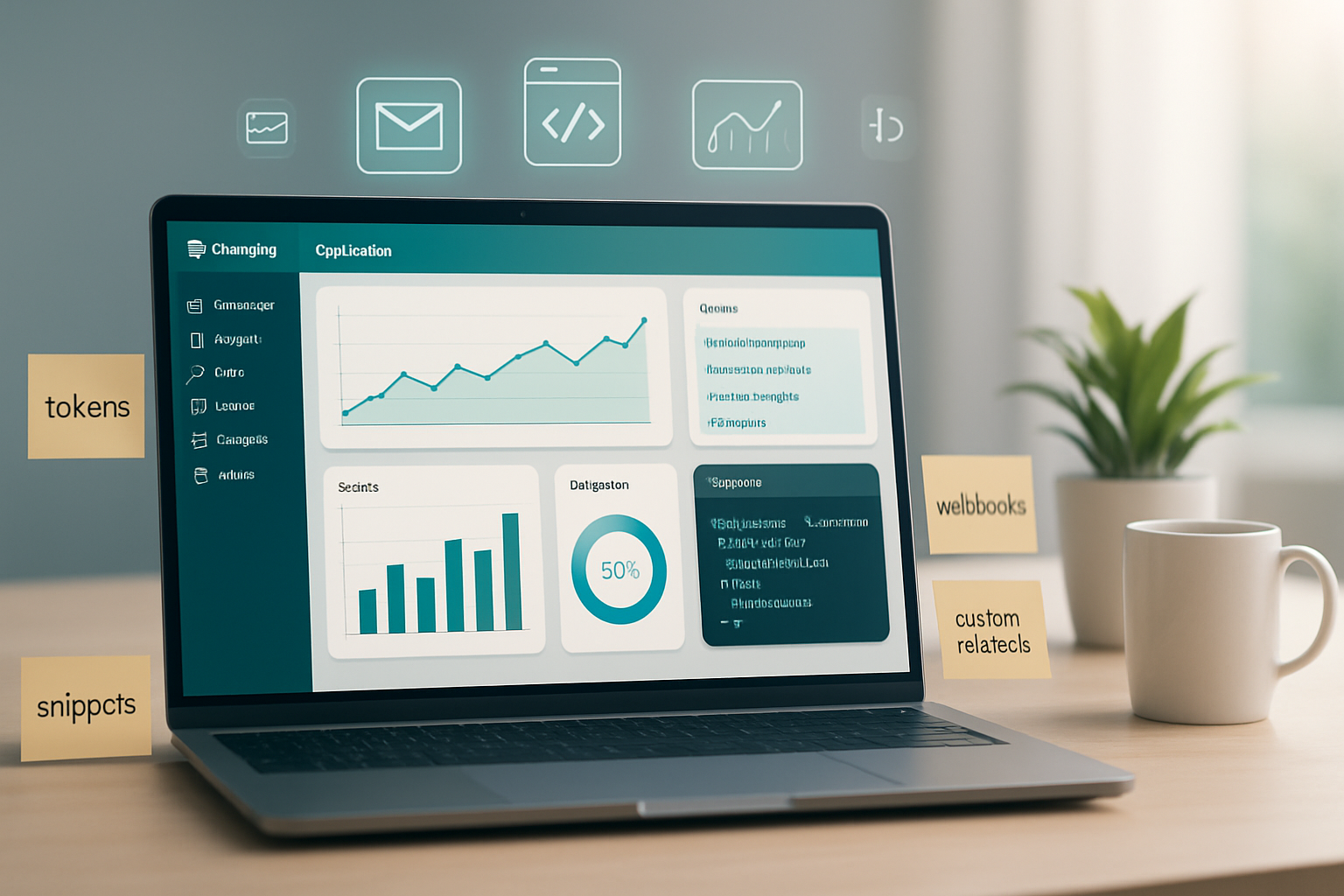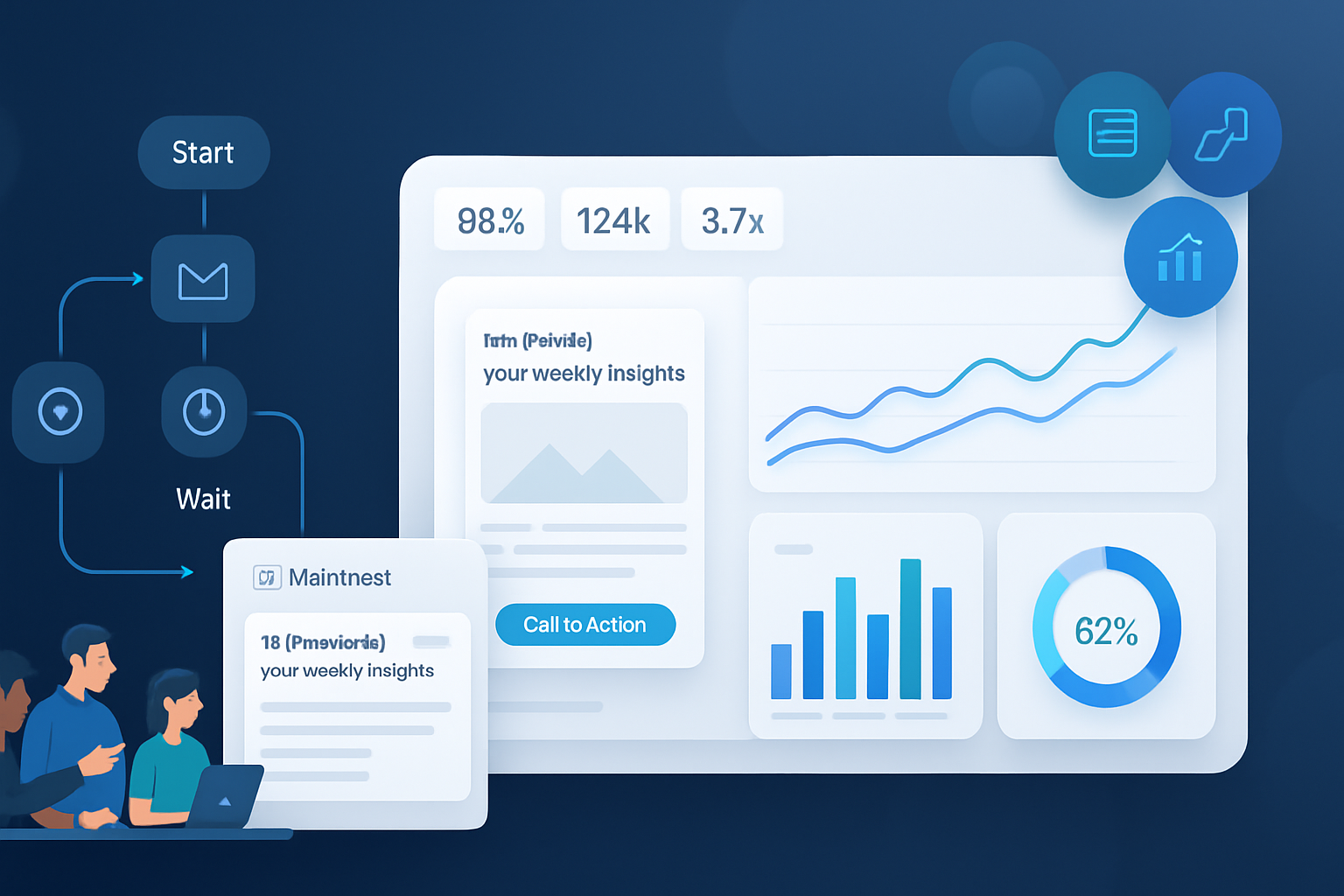· marketing · 6 min read
The Marketo vs HubSpot Debate: Which Platform Truly Offers Better ROI?
A deep, practical comparison of Marketo (Adobe Marketo Engage) and HubSpot focused on real ROI drivers: cost, implementation, automation value, analytics and user experiences. Learn which platform is likely to deliver better return for your organization and how to calculate and maximize that ROI.

Outcome: By the end of this article you’ll know which platform-Marketo (Adobe Marketo Engage) or HubSpot-is more likely to deliver better ROI for your organization, and you’ll have a simple framework and example calculation to test your own expected return.
Why this matters (fast)
You can choose a marketing automation platform because it’s popular. Or you can choose it because it pays for itself. The real question isn’t which product looks cooler. It’s which one reduces cost, increases revenue, or both - for your business. Read on and you’ll walk away with a clear decision path and a plug-and-play ROI calculation.
Quick snapshot: who each platform serves best
- Adobe Marketo Engage - Built for enterprise marketers who require deep customization, complex nurture programs, and tight Salesforce integrations. Strong when marketing operations and developer resources are available.
- HubSpot Marketing Hub - An integrated, user-friendly platform that pairs a CRM, CMS, sales tools and marketing automation. Designed to help SMBs and mid-market teams move fast and measure results with less setup.
These are generalizations. Which one yields better ROI depends on buyer profile, implementation discipline, and measurement.
How to think about ROI for marketing automation
ROI from a platform comes from three buckets:
- Revenue lift - more leads, better lead-to-opportunity conversion, improved pipeline velocity.
- Cost reduction - marketing and sales efficiency gains, lower agency/consulting spend, automation replacing manual work.
- Avoided costs / opportunity costs - avoiding lost deals, faster onboarding of customers.
You should measure both hard and soft benefits: incremental pipeline, time saved per employee, churn reduction, and the time to value (how quickly you start seeing outcomes).
Head-to-head: the ROI drivers
1) Pricing and total cost of ownership
- HubSpot uses tiered licensing with predictable bundles (Starter/Professional/Enterprise). The bundled CRM reduces the need for a separate CRM in many organizations, lowering TCO.
- Marketo (Adobe Marketo Engage) typically charges based on contacts and required modules; enterprise implementations often bring additional costs - consulting, governance, and integrations.
Bottom line: HubSpot often has lower upfront and early-stage costs for SMBs and mid-market teams; Marketo can make sense if your org is large enough to absorb higher license and implementation costs and needs enterprise-grade flexibility.
Sources and comparative pricing pages: HubSpot’s pricing overview and Adobe Marketo Engage information are useful references: HubSpot pricing & packages and Adobe Marketo Engage.
2) Implementation and time-to-value
- HubSpot - faster to deploy for common use cases. Templates, built-in CRM, and a guided onboarding ecosystem shorten time-to-first-campaign.
- Marketo - implementation can be longer due to custom architecture, especially in enterprises integrating with complex Salesforce setups. Longer time-to-value unless you have experienced ops resources.
Effect on ROI: faster deployment means quicker realization of revenue and inbox efficiency, which improves short-term ROI.
3) Features, flexibility and advanced capabilities
- Marketo shines at complex, cross-channel nurture programs, advanced lead scoring, and program-level customizations. Enterprise marketers appreciate its depth.
- HubSpot emphasizes ease-of-use, strong default analytics, multi-channel capabilities, and the advantage of an integrated CRM, CMS, and sales stack.
If your revenue lift depends on sophisticated lead lifecycle logic, Marketo’s advanced capabilities can unlock more revenue - but only if you have the people to implement and maintain them.
4) Integrations & CRM
- Marketo historically pairs with Salesforce and is engineered for enterprise CRM-heavy stacks.
- HubSpot includes its own CRM, making it cheaper and simpler to run end-to-end inbound programs without extra integration costs.
Integration complexity directly impacts implementation cost and ongoing maintenance - a key ROI lever.
5) Analytics, attribution and reporting
- HubSpot provides out-of-the-box multi-touch attribution models and easy-to-use dashboards suitable for most teams.
- Marketo can provide granular program reporting, but building multi-touch attribution and executive dashboards often requires data engineering or BI tooling.
If attribution and near-immediate clarity on campaign ROI are priorities, simpler dashboards reduce time-to-insight and improve decision-making speed.
What users and case studies tell us
- Review aggregators (G2, TrustRadius, Capterra) show HubSpot with higher satisfaction among SMBs and marketing users who prioritize ease and speed; Marketo reviews skew toward enterprise users who need flexibility. See the comparison pages at G2: Marketo vs HubSpot and TrustRadius Marketo vs HubSpot.
- Vendor case studies - HubSpot’s case study library highlights rapid customer acquisition and streamlined sales-marketing alignment for growing companies. Adobe’s Marketo Engage customer stories focus on complex enterprise programs and revenue orchestration. See
Common themes from reviews and case studies:
- HubSpot users frequently report faster ramp-up and measurable increases in lead-to-customer conversion within months.
- Marketo customers report stronger control over complex journeys and better handling of high-volume enterprise use cases - but with longer implementations and higher consulting spend.
Which platform delivers better ROI? (the nuanced verdict)
There is no universal winner. Ask yourself these three questions:
- How complex are your marketing programs? (simple → HubSpot; highly complex → Marketo)
- What’s your company size and available ops resources? (SMB/mid-market or limited ops → HubSpot; large enterprise with MarOps team → Marketo)
- How fast do you need measurable outcomes? (fast → HubSpot; can wait to build bespoke programs → Marketo)
General guidance:
- For most SMBs and many mid-market companies, HubSpot will produce higher ROI because of lower TCO, faster time-to-value, built-in CRM and simpler analytics.
- For enterprises with complex requirements, large volumes of contacts, and existing Salesforce ecosystems, Marketo can produce superior long-term ROI - but only if you budget for implementation, governance, and ongoing specialist resources.
How to calculate expected ROI (simple formula + example)
Use this straightforward ROI model:
- Incremental revenue attributable to platform over 12 months (ΔRevenue)
- Cost of platform over 12 months (License + Implementation amortized + Training + Integrations = Total Cost)
- ROI = (ΔRevenue - Total Cost) / Total Cost
Example (hypothetical SMB switching to HubSpot):
- Incremental revenue from improved conversion and faster follow-up - $150,000
- Annual license & subscription - $20,000
- Implementation & training (amortized over 3 years) - $9,000
- Integrations & third-party services - $6,000
- Total Cost = $35,000
- ROI = ($150,000 - $35,000) / $35,000 = 3.29 → 329% ROI
Adjust the incremental revenue number conservatively. Run sensitivity analysis: best-case, base-case, worst-case.
Practical checklist to maximize ROI (no fluff)
- Start with goals - map required workflows and outcomes (revenue, conversions, time saved).
- Choose scope - pilot a single high-priority use case (lead-to-MQL flow, onboarding sequence).
- Measure baseline metrics - traffic, conversion rate, time-to-first-touch, rep response time.
- Invest in training and one operations hire/consultant for the first 6–12 months.
- Integrate cleanly - make sure CRM mapping and attribution are correct before scaling.
- Automate where it saves the most time and revenue (lead routing, lead scoring, nurture flows).
- Review attribution monthly and iterate the top 3 campaigns creating pipeline.
Final recommendation (two-minute decision)
- You’re an SMB or a fast-growing mid-market team - pick HubSpot for faster time-to-value, lower initial cost, and simpler analytics. Expect measurable ROI quickly.
- You’re an enterprise with complex, multi-touch programs and a mature MarOps team - choose Marketo if you can afford the implementation and governance overhead. Expect higher long-term ROI but slower ramp.
Either platform can deliver strong ROI - but only if you align goals, resources, and measurement from day one.
Resources & further reading
- HubSpot pricing and case studies: https://www.hubspot.com/pricing and https://www.hubspot.com/case-studies
- Adobe Marketo Engage overview and customer stories: https://business.adobe.com/products/marketo/marketo-engage.html
- Comparative review pages: G2 comparison, TrustRadius comparison
Make the choice that matches your team, not the vendor logo. That’s how you get real ROI.



